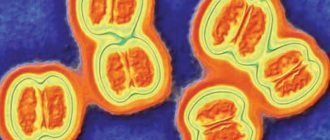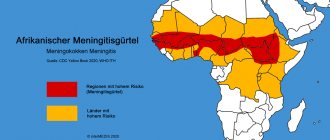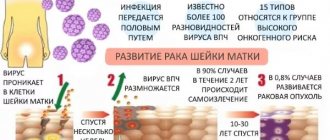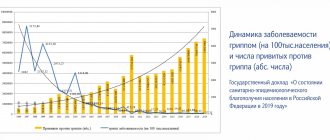Hiberix (HIBERIX) is a vaccine produced by GlaxoSmithKline Biologicals, intended for children from 6 weeks (1.5 months) to 5 years. According to the National Preventive Vaccination Calendar, children at risk should be vaccinated against hemophilus influenzae at the ages of 3, 4.5 and 6 months. Revaccination is carried out at the age of 1.5 years.
Since this vaccination is scheduled to be given simultaneously with immunization against whooping cough, diphtheria, tetanus and polio, as a rule, parents choose a complex option - Pentaxim or Infanrix Hexa, which include toxoids of all these diseases. Therefore, few people know about the existence of a separate vaccine against hemophilus influenzae infection. However, there are many cases when neither Pentaxim nor Infanrix is suitable for a child, but Hiberix is still needed. What are these cases?
Description of the drug
The Hiberix vaccine is intended for the prevention of purulent-septic diseases caused by Haemophilus influenzae type b (hemophilus influenzae), such as meningitis (inflammation of the meninges), sepsis (generalized bacterial infection), purulent arthritis (often accompanied by ostemyelitis), epiglotitis (inflammation of the epiglottis), pneumonia, inflammation of the subcutaneous tissue.
Hemophilus influenzae infection is transmitted by airborne droplets (and in children of the first year of life, contact transmission is also possible) and is extremely dangerous for children in the first years of life, since most often Hemophilus influenzae causes complications of a common acute respiratory viral infection, which can lead to serious life-threatening conditions (sepsis, meningitis, epiglotitis). Therefore, it is extremely important to form strong immunity in a child against Haemophilus influenzae type b.
The Hiberix vaccine contains purified Haemophilus influenzae type b capsular polysaccharide conjugated to tetanus toxoid.
The vaccine meets WHO requirements for the production of biological products and for Hib conjugate vaccines.
The Hiberix vaccine is used in more than 100 countries around the world. Vaccination against Hib infection has made it possible to virtually eliminate Hib meningitis and reduce the incidence of severe pneumonia by 20%. Vaccination has led to the almost complete disappearance of epiglottitis: in Finland, the incidence of epiglottitis has decreased from 7.6 to 0.0 per 100,000 children under 4 years of age. Similar data are available for other countries. The US Food and Drug Administration (FDA) has approved Hiberix for booster vaccination in children in the second year of life. The Hiberix vaccine was registered in Russia in 2004.
Hiberix or polyvaccine
So, should you choose a multi-vaccine - Pentaxim or Infanrix Hexa - or a stand-alone HIB vaccine? Polyvaccine is more convenient if:
- the child is vaccinated in strict accordance with the National Calendar, without medical withdrawals or postponements;
- he had not previously been vaccinated against whooping cough, tetanus and diphtheria;
- there is no strong reaction to the pertussis component (the most reactogenic component in the pertussis-diphtheria-tetanus vaccinations).
It is better to choose Hiberix if:
- the child was vaccinated with DPT, ADS-M or three-component Infanrix (NOT Hexa);
- The child, in principle, was not vaccinated against Haemophilus influenzae type b until 1.5 years old - after reaching this age he only needs one dose. Remember that after 4 years (the child’s fifth birthday), Hiberix should not be administered to him!
- The goal is to reduce the cost of vaccination (DPT+Hiberix on average will cost less than a polyvaccine).
Hiberix vaccine for the prevention of infection caused by Hemophilus Influenzae type b. Manufacturer: GlaxoSmithKline Biologicals (France), Packer SmithKline Beecham-Biomed LLC Russia hemophilus influenzae + Examination before vaccination - 1900 rubles.
MAKE AN APPOINTMENT PRICES
Compatibility with other vaccines
The Hiberix vaccine can be administered simultaneously with all drugs from the national schedule of preventive vaccinations on the same day, in different parts of the body, in different syringes, with the exception of the BCG vaccine.
The use of the Hiberix vaccine in combination with other vaccinations does not affect their immunogenicity (ability to develop immunity). Tolerability of vaccines does not deteriorate, and the number of adverse reactions does not increase. Administering several vaccines on the same day does not place an excessive burden on the immune system. Hiberix can be used to continue and complete a course of vaccination started with other vaccines against Haemophilus influenzae. All vaccines in the Russian national vaccination calendar are interchangeable.
Children in nurseries and kindergartens get sick more often
The explanation is simple - 40% of children are carriers of hemophilus influenzae infection. This is bad for two reasons:
- are a constant source of infection for new and weakened children;
- They themselves get sick when their immunity decreases for some reason.
The immune system in children under five years of age is not yet sufficiently developed, so a previous Hib infection does not cause a sufficient immune response, antibodies are not formed, and the baby gets sick from it again and again.
WHO has found that children under five years of age who attend kindergartens and nurseries are most likely to get sick, especially those who are or have been bottle-fed and have not received antibodies to Hib infection in their mother’s milk.
Vaccination scheme
According to the National Calendar of Preventive Vaccinations of Russia, immunization with the Hiberix vaccine consists of 3 doses of the vaccine administered at 3-4.5-6 months of life; revaccination is carried out at 18 months. Vaccination against hemophilus influenzae is included in the National Calendar of Preventive Vaccinations of Russia by Order No. 51 of January 31, 2011. The Hiberix vaccine can be administered simultaneously with vaccination against polio, whooping cough, diphtheria, and tetanus.
The course of primary immunization depends on the age at which vaccination began. When vaccination begins at the age of 6 weeks to 6 months: 3 injections at intervals of 1-2 months. Revaccination is carried out once a year after the 3rd vaccination. Thus, the first injection is carried out, then the second injection 45 days after the first, then the third 45 days after the second. The immunization course is completed by revaccination, carried out one year after the third one is completed.
When starting vaccination between 6 and 12 months of age: 2 injections 1 month apart. Revaccination is carried out once at the age of 18 months. Thus, the first injection is carried out, then the second injection 30 days after the first. The immunization course is completed by revaccination, carried out one year after the second one is completed.
When starting vaccination between 1 and 5 years of age: single injection.
Antibodies with a protective titer of ≥0.15 μg/ml appear 1 month after the end of the vaccination course in 95-100% of children, and 1 month after revaccination - in 100% of children.
How is hemophilus influenzae infection treated?
The difficulty is that the disease is very difficult to treat. The rod is resistant to almost all antibiotics and continues to change, becoming resistant even to recently obtained antibacterial drugs. Therefore, doctors recommend first determining sensitivity to antibiotics, and only then starting to give them to the child, otherwise you may get the opposite effect. Incorrectly prescribed medications will become an excellent breeding ground for microbes, and will also lower the immune system.
Antibiotics can be taken only after consulting a pediatrician and determining the sensitivity of the microbe.
What is the danger of Hib infection?
This infection is one of the types of Haemophilus influenzae. Being an acute infectious disease, hemophilus influenzae infection negatively affects the child's body.
Where and how can you get infected?
- a baby can catch an infection in any place where there are many children, including in a nursery or kindergarten.
- If it is necessary to regularly fight chronic diseases, the child’s body is more susceptible to infection. A weakened immune system simply cannot resist a powerful infection. Therefore, the Act-HIB vaccination is especially relevant for children with heart disease, diabetes mellitus and lung disease.
- Children under 5 years of age can become infected from older brothers and sisters - schoolchildren, who themselves are resistant to infection, but can be carriers of the bacillus. So, if there are children of different ages in the family, it is necessary to vaccinate the children.
- with artificial feeding, the immune defense of the child’s body is significantly reduced. And this is another case in which vaccination with Act-HIB is indicated.
Side effects Act HIB
Most often, the act of Hib, according to reviews, causes local reactions, which manifest themselves in the form of erythema, soreness, inflammation, induration or swelling at the site of drug administration.
Also, according to reviews, the Hib Act can cause irritability, fever, prolonged crying, and vomiting in children.
In extremely rare cases, the temperature rises to 39 degrees, and febrile or afebrile seizures, rash, hypersensitivity reactions, urticaria and itching may also occur.
Contraindications
Contraindications to vaccination with the drug Act Hib are:
- Acute course of diseases. Vaccination is allowed no earlier than 2-4 weeks after complete recovery;
- Mild forms of respiratory and intestinal infections. Vaccination can be carried out after the temperature has normalized;
- Chronic diseases in the acute stage;
- Having an allergy to the components included in the vaccine, especially to tetanus toxoid.
Also, according to reviews, the Hib Act is not prescribed in cases of an allergic reaction to the previous administration of the medication.
Is there evidence that the vaccine is effective?
Yes, I have. A lot of them. Vaccinated children actually start to get sick less often. Thus, in the USA, the incidence decreased by 98%; in Holland, two years after the start of the vaccine campaign, not a single case of HIB meningitis was recorded.
In Russia, the incidence of Hib infection in orphanages is particularly high. As an experiment, in some closed children's institutions in Moscow, all children were vaccinated. As a result, the incidence (total) decreased by 14 times!
Children do not get sick themselves and cease to be carriers of the wand. As a result, the chain of spread is interrupted and the infection leaves the team.
POSITIVE AND NEGATIVE ASPECTS OF VACCINATION
The number of parents refusing to immunize their children increases every year. Opponents of vaccinations argue that the introduction of vaccine preparations is dangerous for the child’s body and provokes the development of neurological complications and disability.
However, many years of immunization experience have proven the following advantages of vaccination against Haemophilus influenzae:
- High efficiency. The vaccine provides protection for a child for 5 years in 95% of cases;
- Vaccinations have reduced the incidence of haemophilus influenzae meningitis in children by 87% in the UK. There are completely no cases of this infection in the Netherlands;
- Vaccination can reduce the incidence of illness in a child upon entering kindergarten;
- In vaccinated children, if infected, the infection is mild.
The listed facts indicate the need for vaccination if the child has no contraindications.
HOW TO PREVENT THE DEVELOPMENT OF COMPLICATIONS?
Doctors recommend preparing your child for immunization against hemophilus influenzae. To do this, on the day of vaccination, the patient must undergo a thorough examination by a pediatrician.
A week before vaccination, any contact of the child with sick people should be limited.
Also, 3-4 days before vaccination, there is no need to introduce new foods into the diet of children or mothers if the baby is breastfed. This will prevent the development of allergies, which may be mistakenly considered as a complication after vaccination.
After the procedure, doctors recommend following these tips:
- Do not leave the clinic premises for 20-30 minutes. This is necessary to provide medical care to a child who develops an allergy to the vaccine;
- If the child feels well, then you can go for a walk. However, crowded places should be avoided to reduce contact with infected people;
- After immunization, water procedures are not prohibited, but it is better to bathe the child in the shower for the first 2-3 days;
- Do not introduce new foods into the diet for 3 days after immunization.
Composition, release form and analogues
Act Hib is available in the form of a lyophilisate for the preparation of a solution for subcutaneous and intramuscular injections along with a solvent. 1 dose of vaccine contains:
- 10 mcg of Haemophilus influenzae type b polysaccharide and 18-30 mcg of conjugated tetanus protein (active ingredients);
- 0.6 mg trometamol, 42.5 mg sucrose (excipients);
0.5 ml of solvent (sodium chloride solution 0.4%) contains 2 mg of sodium chloride and up to 0.5 ml of water for injection.
Vaccine Act Hib is a white homogeneous lyophilisate, and the solvent is produced in the form of a colorless transparent liquid. One cell package contains a bottle with 1 dose of vaccine and 0.5 ml of solvent in a syringe with a fixed needle. In cases where the needle is not attached to the syringe, 2 separate sterile needles are included in the package.
The main analogue of the Act Hib vaccine is Hiberix, produced in Belgium.







